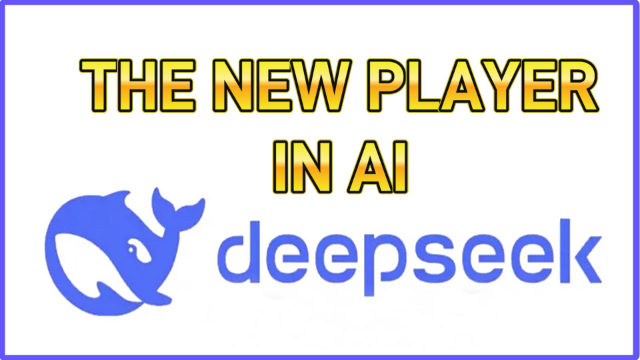DeepSeek, a Chinese AI company, has been making serious waves in the artificial intelligence landscape. Its latest AI models—R1 and R1-Zero—are proving to be formidable competitors to OpenAI’s GPT-4 and its yet-to-be-public GPT-5 models. What makes DeepSeek stand out? It’s not just another well-funded AI lab burning through billions of dollars. Instead, DeepSeek has taken a scrappy, cost-effective approach, proving that top-tier AI performance doesn’t necessarily require the latest, most expensive hardware.
Unlike OpenAI, which relies on cutting-edge GPU clusters and deep-pocketed investments from Microsoft, DeepSeek has optimized its models to run on older, less powerful hardware while still delivering remarkable results. This efficiency-driven strategy is shaking up the AI world, demonstrating that intelligence isn’t just about brute force—it’s also about smart engineering.
DeepSeek’s Technological Breakthroughs: Doing More with Less
One of the most striking innovations behind DeepSeek’s R1 models is their reliance on pure reinforcement learning (RL)—completely eliminating the need for human feedback during training. This is a significant shift in AI model development. Traditionally, AI models rely heavily on reinforcement learning from human feedback (RLHF) to fine-tune their responses and improve alignment with human expectations. DeepSeek, however, has taken the self-sufficiency route, allowing its AI to learn and correct mistakes on its own.
Why is This a Big Deal?
- Cost Reduction: Human feedback is expensive, requiring large teams of labelers and domain experts. Removing this step cuts development costs significantly.
- Faster Iteration: Since the model isn’t waiting for human input, its learning cycle speeds up dramatically.
- Self-Improving AI: If executed well, reinforcement learning alone could lead to AI that better understands its own weaknesses and corrects them more efficiently than a human-guided model.
Early benchmarks suggest that DeepSeek’s AI is surprisingly strong at reasoning and coding tasks—two of the most complex areas in AI development. This puts the company in a prime position to challenge the giants of the industry, proving that necessity truly is the mother of invention.
Industry Shockwaves: How DeepSeek is Reshaping the AI Market
The emergence of DeepSeek as a serious contender is more than just an impressive tech story—it’s an economic and strategic development with wide-ranging consequences.
The NVIDIA Connection
DeepSeek’s success has already rattled the stock market, with NVIDIA’s stock price taking a hit as investors digest the implications. The assumption has long been that AI dominance would come from companies that could afford the biggest and best GPU clusters. But DeepSeek is showing that algorithmic efficiency might be just as important as raw computing power. If AI can be trained and run on less expensive hardware, this could disrupt the AI hardware market and reduce dependence on NVIDIA’s high-end chips.
Parallels to Historical Market Shifts
This scenario echoes historical moments where an underdog, driven by necessity, upended an industry. Consider:
- The Japanese Auto Revolution: In the 1970s and 80s, Japanese automakers like Toyota and Honda introduced fuel-efficient cars that disrupted the gas-guzzling American auto industry.
- The PC vs. Mainframe Battle: Personal computers, once dismissed as inferior, eventually overtook mainframes by focusing on affordability and accessibility.
- Tesla’s Rise Against Auto Giants: While traditional automakers laughed at the idea of electric vehicles, Tesla focused on efficiency and software-driven advantages to claim its throne.
DeepSeek’s rise suggests that a similar shift could be underway in AI: the biggest budgets and most powerful GPUs might not be the only paths to dominance anymore.
Reactions from Experts and the Public: Hope, Skepticism, and Intrigue
Tech Enthusiasts and AI Experts Weigh In
The reaction to DeepSeek’s innovations has been a mix of excitement and skepticism. On one side, there’s a wave of admiration for the company’s ingenuity—especially among AI researchers who appreciate the elegance of efficient model design. Many are applauding DeepSeek for proving that innovation doesn’t always require deep pockets—just smart engineering.
On the other side, skeptics are raising important questions:
- Can these AI models sustain their performance at scale?
- Will reinforcement learning alone be enough for long-term improvements?
- How well do DeepSeek’s models perform in the real world, outside of controlled benchmarks?
The Geopolitical Catalyst
One undeniable factor behind DeepSeek’s push for efficiency is U.S. restrictions on high-end chip exports to China. Some analysts argue that these restrictions have forced China to innovate in ways that Western companies have not yet been pressured to. In other words, DeepSeek’s rise may be a direct consequence of external limitations, pushing the company to find creative ways to stay competitive.
This is sparking deeper discussions about the future of AI development. Could similar restrictions on Western firms push them toward more efficient AI strategies? If DeepSeek proves successful, will it inspire a global shift away from the current brute-force hardware race?
Strategic Lessons: Will Western AI Giants Change Course?
DeepSeek’s strategy challenges the conventional wisdom that bigger models and bigger data always win. If their reinforcement learning approach proves successful at scale, it could force companies like OpenAI, Google DeepMind, and Anthropic to rethink their strategies.
Possible Industry Shifts
- Focus on Software Over Hardware: Companies may start prioritizing algorithmic efficiency rather than just throwing more GPUs at the problem.
- More Cost-Effective AI: If AI can be developed with fewer resources, it could become more accessible to startups and smaller players.
- A Shift Toward Self-Sufficient AI: The idea of AI models that can learn and correct themselves without human intervention could become a dominant research trend.
This shift wouldn’t just impact the biggest AI labs—it could democratize AI, making it more accessible to companies and researchers who don’t have access to billion-dollar budgets.
Cultural and Strategic Insights: The Underdog Effect
DeepSeek’s story taps into a longstanding cultural narrative—that of the underdog disrupting the establishment. Tech commentators have drawn parallels between DeepSeek’s rise and pop culture figures known for resourcefulness, such as:
- The Professor from Gilligan’s Island, who could build gadgets out of coconuts but couldn’t fix a boat.
- Edison vs. Tesla, where Tesla’s efficiency-focused approach competed with Edison’s brute-force methods.
- David vs. Goliath, a timeless tale of a smaller, scrappier player taking on a giant.
This narrative resonates deeply in the AI community, where efficiency and ingenuity have always been prized values. Many see DeepSeek’s success as a lesson in creativity—sometimes limitations can drive better innovations.
Conclusion: The Future of AI is Being Redefined
DeepSeek’s rise isn’t just a technological breakthrough—it’s a wake-up call for the AI industry. The company’s ability to challenge OpenAI, despite working with fewer resources, suggests that the future of AI may not belong solely to the biggest spenders with the most powerful hardware.
Instead, AI development may increasingly reward smart optimization, efficient algorithms, and self-improving systems. If DeepSeek’s approach gains traction, it could reshape the entire landscape of AI research and commercialization, leading to more accessible, sustainable, and innovative AI models.
For now, the industry is watching closely. If DeepSeek continues on this trajectory, it won’t just be a competitor—it could redefine what it means to build cutting-edge AI in the first place.










